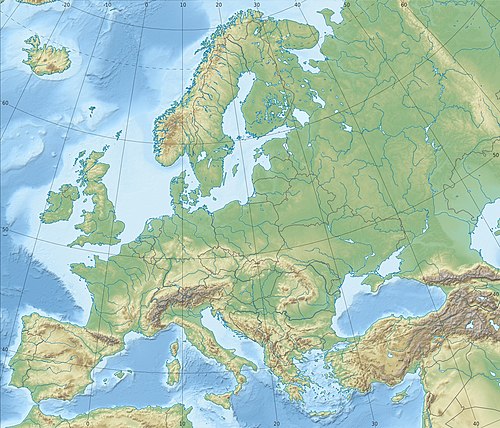Source: [2]
In the early 1950s arctic surroundings and weather conditions of northern Canada made construction and manning of HF and VHF radio or microwave relay stations almost impossible. However, there was an urgent need of reliable data and communication facilities from the radarstations in the north to their control centers in the south.
The initial phase was using tropospheric scatter radio communication (troposcatter). Powerful radio signals in the kiloWatt range were scattered off the troposphere onwards to distant receiving stations using gigantic ‘billboard’ like antennas picking up just a fraction of the transmitted signals which had been scattered forward, meaning that the antenna and equipment maintenance and alignment had to be executed very carefully.
Construction of this system coded Polevault started in 1954, becoming ops in 1955 and becoming extended as of 1956. This troposcatter system had been supported by an undersea datacable system stretching from Thule airbase Greenland via Cape Dyer to Newfoundland Canada. The undersea cable system however appeared to be unreliable being cut many times by trawlers and icebergs so a better data transfersystem was definitely needed.
As of 1962 the new Semi Automatic Ground Environment (SAGE) system led to a gradual shut down of the Polevault system. SAGE consisted of large computers and associated networking equipment that coordinated data from many radar sites and processed it to produce a single unified image of the airspace over a wide area. SAGE directed and controlled the former North American Air Defense (NORAD) response to a Soviet air attack, operating in this role from the late 1950s into the 1980s.
Construction of the large Ballistic Missile Early Warning System (BMEWS) radars at Thule airbase and at Fylingdales (UK) and another radar chain through Greenland, Iceland and the Faroe Islands also called for new powerful troposcatter communication stations linking all radarsites to the NORAD Hq at Colorado (US). This communication chain became known as the North Atlantic Radio System (NARS).
Equipment used
Source: [3]
The NARS used AN/FRC-39(V) and AN/FRC-56(V) transmitting and receiving equipment, manufactured by Radio Engineering Laboratories, which could be configured for 1 kW, 10 kW or 50 kW power output depending on the range and/or quality of signal required.
NARS sites were configured for 10 kW output, with the exception of site 41 in both directions and site 42's connection to site 41. Each set consisted of 2 transmitters and 4 receivers, for redundancy and to boost signal to noise ratios, using vacuum tube technology which proved time-consuming to maintain at high levels of efficiency. [1] The 50kW used 120 ft antennas and the 10kW shots used 60 ft antennas. Equipment was configured for Quad diversity as follows; Polarity diversity, Space Diversity, Frequency Diversity and Combiner diversity as was typical for most Tropo-scatter communications over difficult paths.
Levels of service proved extremely variable with the effects of weather and finicky equipment frequently causing loss of connection. Improvements were gained through better maintenance procedures but did not change significantly until the introduction of solid state technology, with the system able to transmit at 9.6 kbit/s, (a very fast internet connection for that time), by the time the system was closed down in 1992 after 30 years of service. [1]
With the advent of satellite communications (SATCOM) the days of the Troposcatter networks were over, but NARS was closed down early due to the loss of the DYE-2 DEW Line station in 1988, severing the networks connection with the rest of the DEW line. Site 46 also had to close to make way for the new BMEWS Phased Array Radar at RAF Fylingdales. [1]
This page is based on this
Wikipedia article Text is available under the
CC BY-SA 4.0 license; additional terms may apply.
Images, videos and audio are available under their respective licenses.


